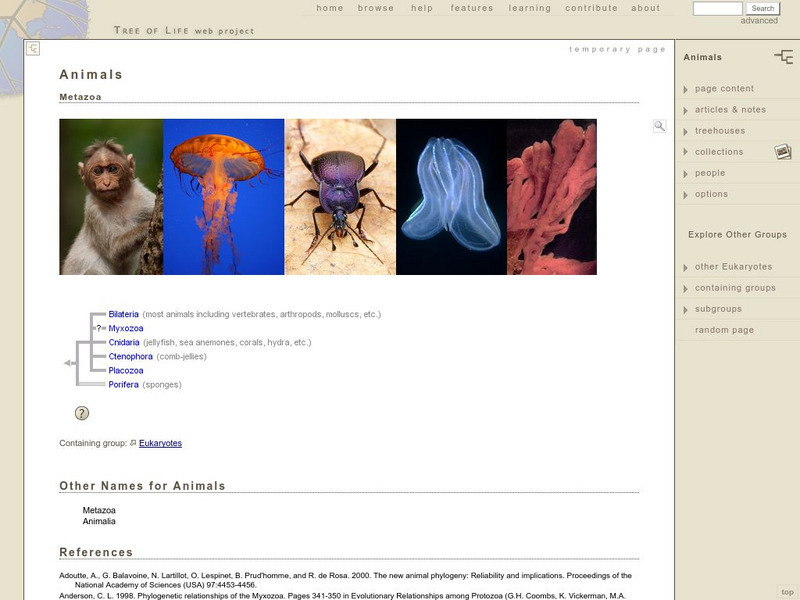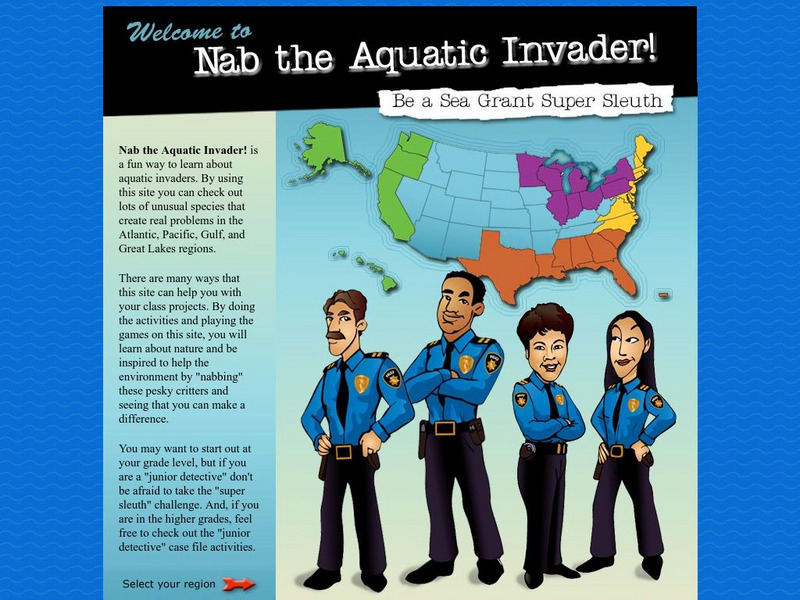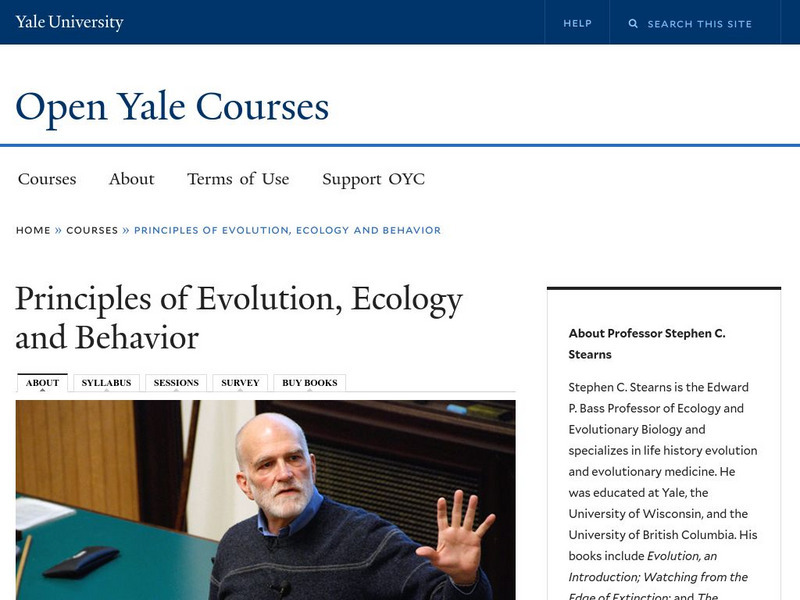Tree of Life Project
The Tree of Life Web Project: Animals
Extensive site that contains much information about the various animal phyla. Each phyla gives photos, common examples, scientific names and references. Collection of 1630 websites about bio-diversity.
Other
Iucn: Red List of Threatened Species
Find out about endangered animals featured here from the IUCN Red List of Threatened Species. Search through thumbnails to view previous months' species of the day to learn more.
Other
Missouri Botanical Garden: Education: Exploring the Tropics
Extensive information about tropical forests, including the plants, animals, and people found there. Also covers adaptations, biodiversity, economic benefits of tropical rain forests, and threats to their survival.
Other
University of the Western Cape: Department of Biodiversity: Abiotic Components
The Department of Biodiversity at UWC presents the impact different abiotic components on plants and animals. Some factors are light, temperature, and wind.
Other
Sea Grant: Nab the Aquatic Invader
Choose a region in the United States and use your detective skills to help find the top ten organisms that are invading those areas.
Other
Illinois Department of Natural Resources: Illinois Biodiversity Basics [Pdf]
A 185-page collection of activities for learning about biodiversity in Illinois, that can easily be adapted for other places.
Other
Ny Botanical Garden: Fungal and Plant Diversity
Findings of an expedition by the New York Botanical Garden in French Guiana to investigate vegetation.
ReadWriteThink
Read Write Think: Building Word Knowledge Through Informational Websites
A instructional activity through which middle schoolers identify, understand and work with important vocabulary words found in an online article on biodiversity. Based on the "Ten Important Words Plus" strategy that teachers can employ...
Natural History Museum
Natural History Museum (Uk): Biodiversity
Find a wealth of scientific information on the status of biodiversity in the world today, the threats it faces, and why it is critically important to preserve it.
National Geographic
National Geographic: Marine Ecosystems and Biodiversity
In this unit students explore major marine ecosystems by locating them on maps. Students use marine examples to learn about energy transfer through food chains and food webs and then they discuss how food webs can illustrate the health...
National Geographic
National Geographic: Marine Ecosystems and Biodiversity
A collection of three lessons where students learn about abiotic factors in marine ecosystems, about marine food chains and biodiversity, and about marine food webs and trophic levels. Includes handouts, website links, and a vocabulary...
Nature Conservancy
The Nature Conservancy: Gardens Activity Guide: Habitats
In this lesson students learn how the garden provides habitat for a variety of different animal species. They make observations and collect data to determine which species inhabit the garden. They will investigate relationships among...
Other
Introduction to the Biosphere: Characteristics of the Earth's Terrestrial Biomes
From Chapter 9 of a textbook on physical geography that covers the biosphere. Important vocabulary is highlighted and linked to a glossary. It explains the characteristics of a biome, and describes the features of the eight different...
Other
Welcome to Biodiversity Hotspots
Conservation International offers this extensive look at some of earth's most vulnerable areas. Some of the most remarkably diverse places in the world also prove to be some of the most threatened. Learn more about the efforts in place...
San Diego Zoo Global
San Diego Zoo: Animals
This resource describes the most popular animals at the world-famous San Diego Zoo. Each profile gives background about a specific animal, and more information about the species.
Other
Plant Watch
The Plant Watch website is designed to teach students how to record observations about plants. The site provides good information about the parts of plants and the section, "Plant Descriptions," will lead you to detailed information on...
Georgia Department of Education
Ga Virtual Learning: Ap Environmental Science: Biodiversity
Through an interactive learning module, students investigate the importance of species richness and biological diversity.
Georgia Department of Education
Ga Virtual Learning: Ap Environmental Science: Terrestrial Biomes and Land Use
How we can live sustainably on our natural resources while also preserving enough nature so these resources can be replenished represents one of the most important questions in environmental science. Through learning about terrestrial...
TeachEngineering
Teach Engineering: Mice Rule! (Or Not)
Students explore the relationships between genetics, biodiversity, and evolution through a simple activity involving hypothetical wild mouse populations. First, students toss coins to determine what traits a set of mouse parents...
OneWorld UK
One World: Stop Life in Danger
Elementary students will appreciate the cartoon style fact clips as the evolution of life on earth is laid out. Diversity, survival of the fittest, and ideas to help the environment are all included. An entertaining site for younger...
American Academy of Achievement
Academy of Achievement: Edward O. Wilson, ph.d.
Biography, photos and interview on E.O. Wilson who is considered to be the father of sociobiology, has authored many books and had been active in conservation efforts.
Other
Greenpeace
This is the home site for the non-profit organization Greenpeace. Greenpeace is an organization whose primary concern are threats to the planet's biodiversity and environment. The site provides links to news about the organization, a...
World Wildlife Fund for Nature
World Wildlife Fund: Ranger Club (Dutch Version)
The Dutch version of the World Nature Fun's Ranger Club children's site. Students learn about endangered animals in different habitats, obtain pictures through the animal library and play games. Some sections of the resource offer paid...
Yale University
Open Yale Courses: Principles of Evolution, Ecology, and Behavior
Access any one of thirty-six lectures from a biological sciences course, in audio, video, and text format. Coverage includes evolution, natural selection, the fossil record, the history of life on Earth, ecological communities,...



















